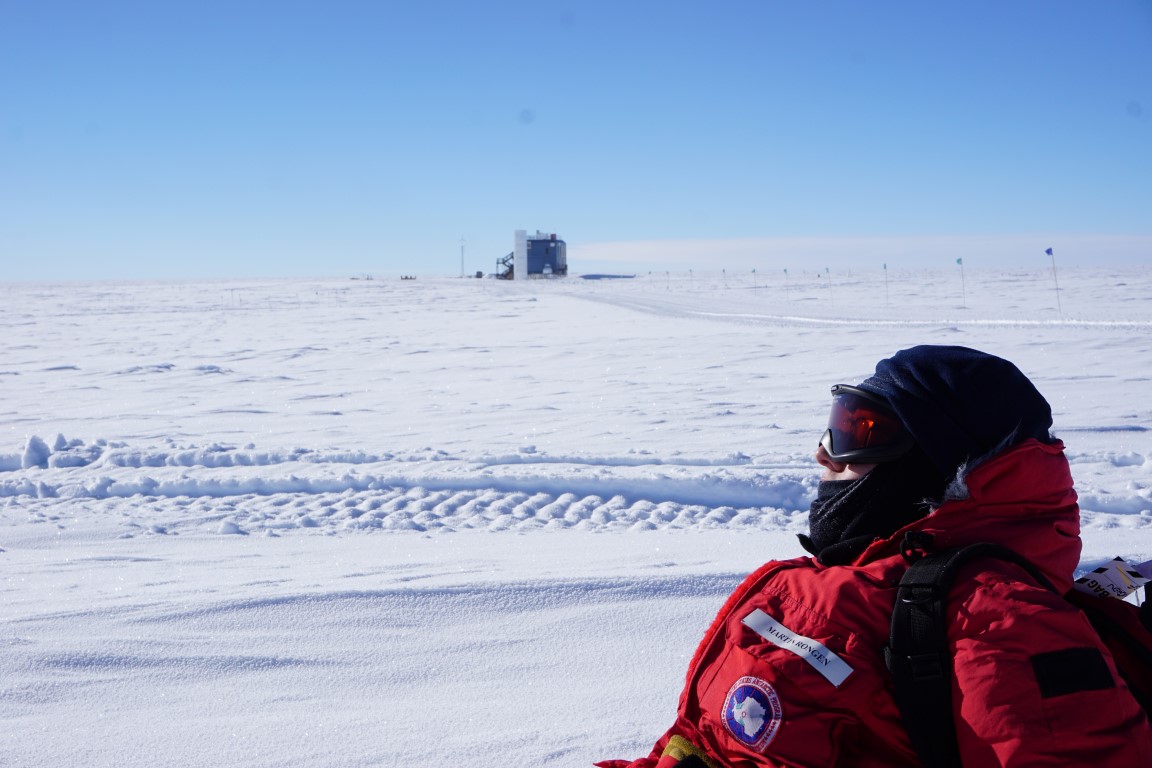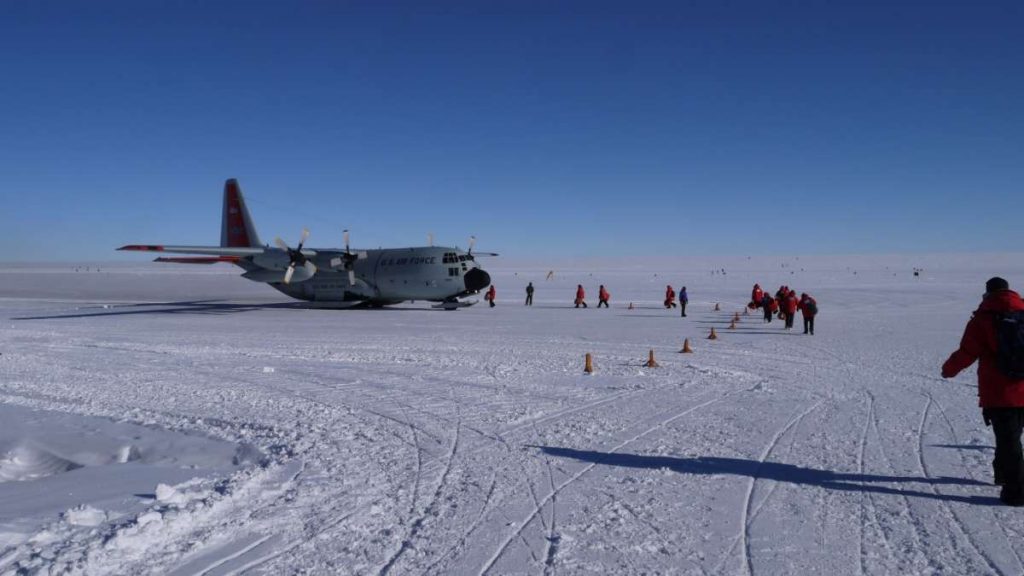
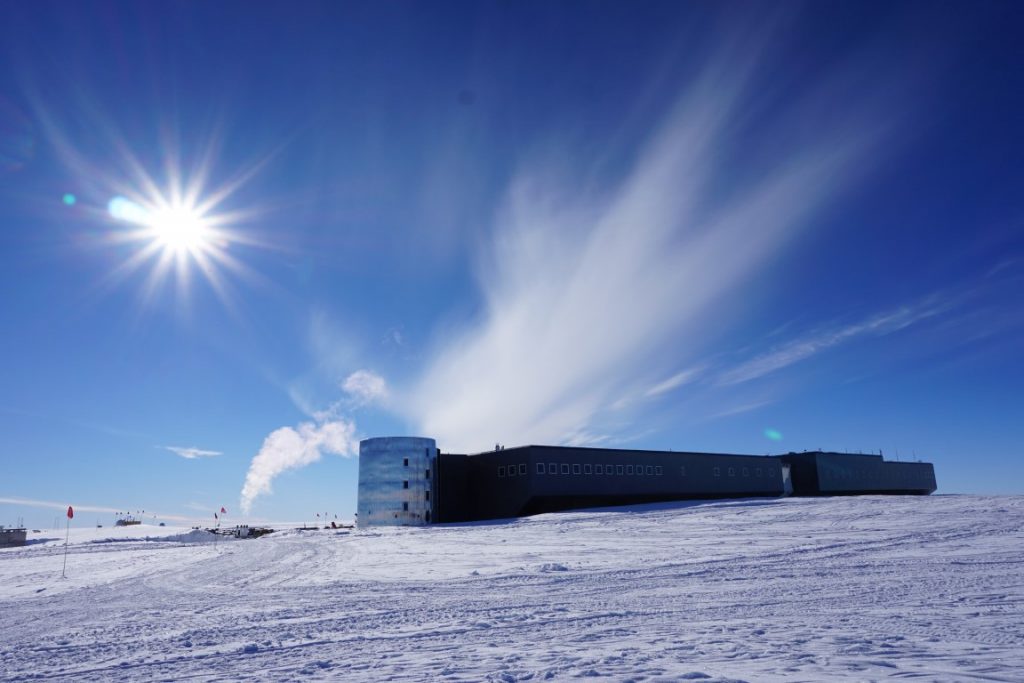
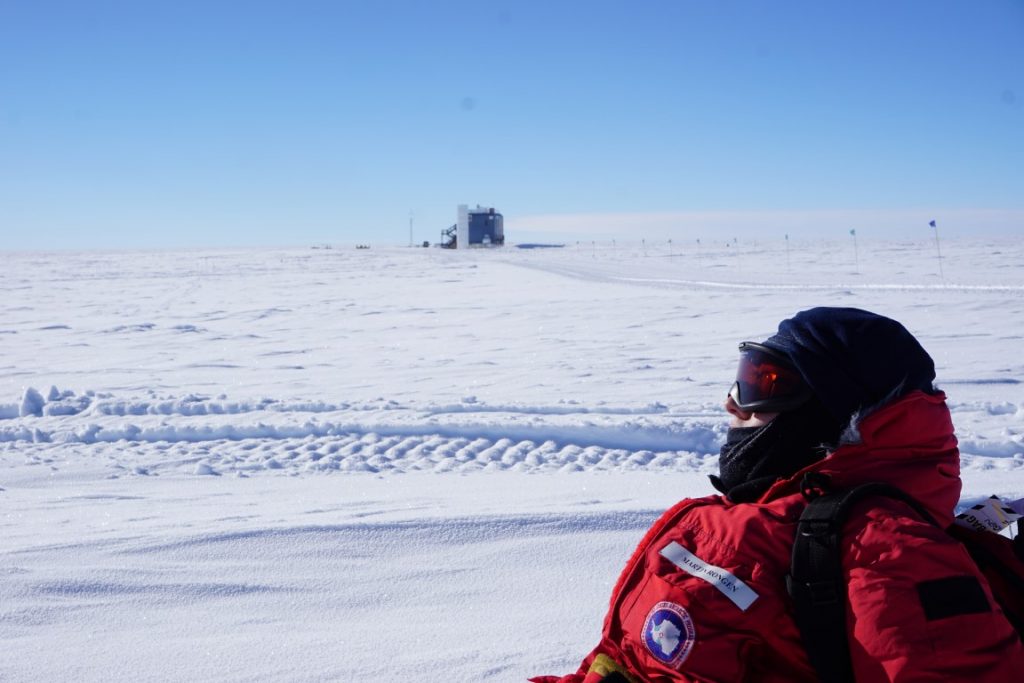
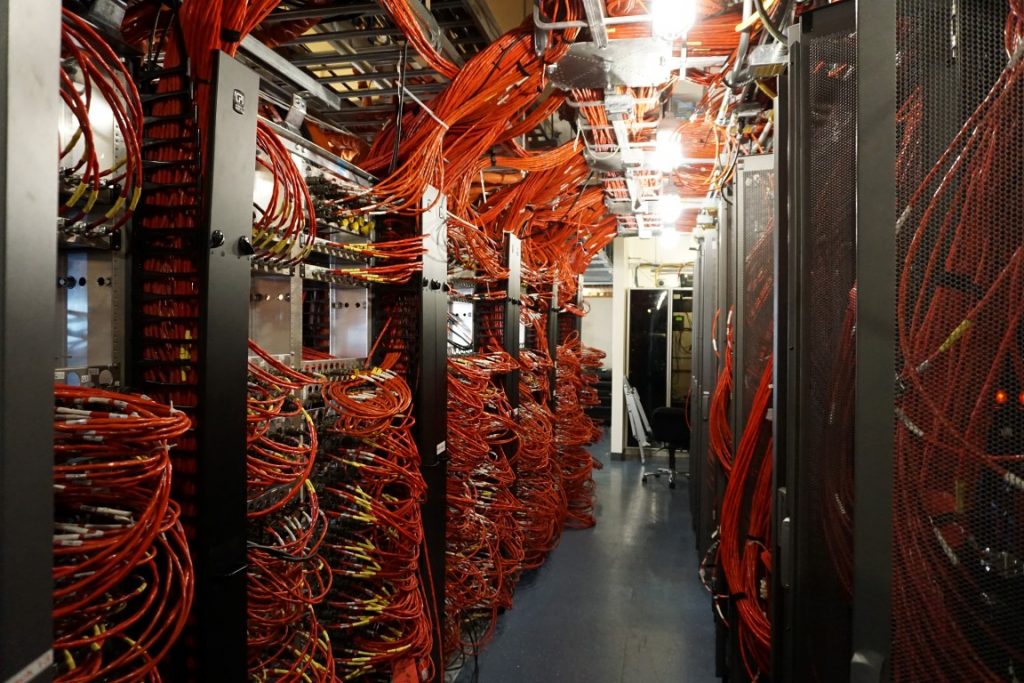

For a physicist, having worked for years on improving the understanding of an experiment and its underlying models, it is actually a dramatic situation to be able to touch in situ the hardware that generates the data. Working on IceCube, situated at the Geographic South Pole, it is a particularly surrealistic adventure.
Depending on the weather, mechanical issues with the planes and scheduling constrains, the journey from Europe via New Zealand and the Antarctic logistics hub McMurdo can take anywhere from four days to two weeks. Once at “the Pole”, you feel struck by the strong contrast created of a fossil fuel-driven outpost of civilization (single rooms, spacious laboratories & recreational rooms and three warm meals a day) clashing with the harsh conditions of one of the coldest, driest and most remote places on Earth. The absurdity of this situation is probably best exemplified by the cult-like status surrounding fresh breakfast eggs and the sadness that ensues when none are available after a week without flights.
IceCube is a unique experiment using the deep glacial ice which has accumulated over the last 100 millennia and it’s outstanding optical properties as a detection medium for a particle physics experiment. With the over 5000 sensors frozen about 2km deep in the ice, the only reminders of the experiment are small islands of bamboo flags marking the location of each drill hole as well as a small server-room building in the centre of the instrumented area. As such it takes quite a leap of imagination to appreciate that one is standing on top of nearly 3km of ice, with about 3000 particles being detected and stored per second.
After working on “the ice” for three weeks, we are now heading home. This is a moment comprising an ambivalent mixture of feelings: The anticipation to come home, the sadness to leave this remarkable place and the anxiety as the small R&D telescope we deployed will hopefully survive the grueling winter to gather the required data.
